Occupational Safety Training for Wet Wipes Production
99,000 ₫
Note: The above price is calculated per person and may vary depending on the number of trainees participating in the course and market fluctuations. For more accurate pricing support, please refer to the pricing list or contact our consultation staff directly.
Occupational safety is an important issue in wet wipe manufacturing factories and must be promptly addressed to ensure the health and safety of workers, as well as to enhance the reputation of businesses. The Occupational Safety Training course is one of the effective solutions to raise awareness on preventing workplace accidents for workers involved in wet wipe production.
Table of Contents
Toggle1. Overview of Wet Wipes
a. What is a wet wipe?
- Wet wipes (also known as moist towelettes) are moist paper products used to clean the face or hands, often containing surfactants and fragrances to make the skin feel cool and fresh. Wet wipes can be used in various situations, including at home, while traveling, or during sports and recreational activities. They are typically packaged in small pouches for convenient carrying when out and about.
- The wet wipe manufacturing industry in Vietnam has been experiencing remarkable growth in recent years. Consumer demand for wet wipes is continuously increasing, especially during the summer.
- Most wet wipe manufacturing businesses in Vietnam are small and medium-sized enterprises, concentrated in industrial zones in Binh Duong, Dong Nai, Long An provinces, and Ho Chi Minh City. Many businesses have invested in modern technology and diversified their products to meet the different needs of consumers.
- However, the wet wipe manufacturing industry in Vietnam still faces some challenges, such as competition from other wet wipe producing countries like China, Thailand, South Korea; difficulties in sourcing raw materials; fierce price competition; and increasing consumer demand for higher product quality. Nevertheless, with market growth and rising demand for wet wipes, the industry in Vietnam still has great potential for future development.

b. Types of machinery for wet wipe production
Common types of machinery for wet wipe production include:
- Cutting and sealing machine: This machine is used to cut and seal the fabric sheets together to form wet wipes.
- Printing machine: The printing machine is used to print images or decorative patterns on the wet wipes.
- Pressing machine: The pressing machine is used to press the fabric sheets together and remove any air bubbles or excess air, creating a uniform thickness for the wet wipes.
- Cutting machine: The cutting machine is used to cut the wet wipes into various shapes and sizes.
- Packaging machine: The packaging machine is used to package the finished wet wipes for storage and transportation to customers.
These machines are often combined to form a complete and efficient production process.

c. Prominent wet wipe manufacturing companies
Currently, there are many wet wipe manufacturing companies in the Vietnamese market. Here are a few prominent ones:
- Unicharm Vietnam Co., Ltd: This is a 100% foreign-invested company specializing in the production of hygiene products, healthcare products, and other consumer goods. Their wet wipe product is produced under the Diana brand.
- Duy Tan Plastic JSC: This is a company specializing in the production of plastic products, including wet wipes under the Masunaga brand.
- Savico Vietnam Co., Ltd: This is a member company of Song Da Corporation, specializing in the production and distribution of electronics, home appliances, office equipment, and other consumer goods. Their wet wipe product is produced under the Yuki brand.
- Viva Co., Ltd: This is a company that produces and distributes consumer goods, including wet wipes under the Viva brand.
In addition, there are many other businesses producing and trading wet wipe products in the Vietnamese market.
d. Specific jobs in a wet wipe manufacturing plant
Group 1
- Chief Executive Officer, Deputy CEO, Department Heads in the wet wipe manufacturing plant.
Group 2
- Safety officers: manage safety in the plant, design safety procedures, supervise and urge employees to comply with safe work procedures.
Group 3
- Maintenance, repair, and other tasks related to managing the plant’s production activities.
- The process of production preparation, production scheduling, production process supervision, product quality inspection, and other operational activities to ensure wet wipe production meets required quality and quantity standards.
- Fabricating molds to produce wet wipes that meet quality, quantity, and technical standards.
- Inspecting, periodically maintaining, and repairing wet wipe production equipment and machinery according to plan, ensuring stable and safe operation.
- Setting up and adjusting wet wipe production equipment and machinery to ensure product quality and save energy.
- Handling technical incidents when wet wipe production machinery encounters problems.
- Receiving and inspecting the quality of input materials such as fabric, chemicals, production inputs, and other additives.
- Arranging and storing raw materials and supplies necessary for the production process.
- Using tools, machinery, and equipment to cut, seal, and package fabrics into wet wipes.
- Using printing and heat-pressing machines to print and press images or text onto wet wipes.
- Using air blowers to package wet wipes into bags or boxes.
Group 4
- Office jobs, service, sales, marketing.
- Production management, quality management, human resource management, materials management, financial and accounting management.
- Designing safe production processes, analyzing, designing, researching, and developing wet wipe production technology to improve products and increase production efficiency.
- Designing wet wipe patterns, selecting fabric, colors, images to be printed on wet wipes, and other factors related to product design.
- Monitoring the amount of raw materials needed for the wet wipe production process, planning orders, and checking raw material quality before putting them into production.
- Ensuring the wastewater treatment process from wet wipe production meets standards, ensuring the environment is not polluted.

2. Overview of the occupational safety training course for wet wipe production
Within the scope of this article, we focus on issues surrounding group 3, because group 3 is the group directly involved in the production process and bears the highest risk regarding occupational safety. Refer to other groups here.
a. What is Group 3 occupational safety training?
- Occupational safety training for group 3 consists of sessions to equip workers with awareness on how to prevent occupational accidents.
- The occupational safety training course will help workers recognize and avoid hazards, and limit the risks of occupational accidents while working.
REGISTER FOR OCCUPATIONAL SAFETY TRAINING SERVICE
b. Training duration
Initial safety training duration
- The total training time is at least 24 hours, including examination time.
- 8 hours of theory on the policy and legal system for occupational safety and health.
- 8 hours of theory on basic knowledge of occupational safety and health.
- 4 hours of theory on specialized training content.
- 2 hours of practice on specialized training content.
- 2 hours for a theoretical examination to conclude the training course.
The safety training center will allocate the time into several training sessions depending on the scheduling for employees. However, there will typically be 6 training sessions, and the course will last for 3 days, provided that the manufacturing enterprise can arrange for continuous study time.
Periodic safety training duration
- Before the occupational safety card expires, if workers wish to have it reissued, they must undergo a periodic occupational safety training course, with a periodic safety training duration of at least 50% of the initial safety training duration.
Explanation: The total periodic occupational safety training time is at least 12 hours, including examination time. After completing the periodic training course and passing the examination, the worker will be reissued or have their occupational safety card extended.
c. Content of the training course
| No. | TRAINING CONTENT | TRAINING DURATION (HOURS) | |||
| Total | Including | ||||
| Theory | Practice | Examination | |||
| I | Policy and legal system on occupational safety and health | 8 | 8 | 0 | 0 |
| 1 | Overview of the system of legal normative documents on occupational safety and health. | 6 | 6 | ||
| 2 | System of technical standards and regulations on occupational safety and health. | 1 | 1 | ||
| 3 | Specific regulations of state management agencies on occupational safety and health when constructing new, expanding, or renovating facilities for production, use, storage, and inspection of machinery, equipment, materials, and substances with strict requirements for occupational safety and health. | 1 | 1 | ||
| II | Basic knowledge of occupational safety and health | 8 | 8 | 0 | 0 |
| 1 | Basic knowledge of hazardous and harmful factors at the workplace. | 4 | 4 | ||
| 2 | Methods for improving working conditions. | 1 | 1 | ||
| 3 | Safety culture in production and business. | 1 | 1 | ||
| 4 | Rights and obligations of employers and employees; policies and regimes on occupational safety and health for employees; functions and tasks of the safety and health officer network. | 1 | 1 | ||
| 5 | Occupational safety and health regulations, signs, safety and health instructions, and use of safety equipment, personal protective equipment; professional skills, first aid for occupational accidents, prevention of occupational diseases. | 1 | 1 | ||
| III | Specialized training content | 6 | 4 | 2 | 0 |
| General knowledge of types of machinery, equipment, substances that generate hazardous and harmful factors; analysis, assessment, and management of risks related to occupational safety and health, safe work procedures with machinery, equipment, and substances with strict requirements for occupational safety and health. | 6 | 4 | 2 | ||
| IV | Examination of training content at the end of the course | 2 | 2 | 0 | 0 |
| Total | 24 | 22 | 2 | ||
See more training content for all 6 groups
d. Occupational safety card
After completing the occupational safety training course and passing the examination, the worker will be issued an occupational safety card (in practice, often called a group 3 occupational safety certificate).
The group 3 safety card will clearly state information such as: full name, date of birth, specific job and work environment. It also includes the training duration, a red stamp, and a signature confirming completion of the training course.
According to the regulations for issuing safety cards stated in Clause 2, Article 24 of Decree 44/2016/ND-CP, it is divided into 2 cases:
- In the case where the employer and the employee have an employment contract, the employer must sign, stamp, and affix a seal across the border on the safety card for the trained person in group 3 after they have completed the training course from an occupational safety training unit and passed the examination.
- In the case of freelance or seasonal workers without an employment contract, the training unit must sign, stamp, and affix a seal across the border on the safety card for the worker after they have completed the training course from the occupational safety training unit and passed the examination.

3. Identifying hazards in wet wipe production
During the wet wipe production process, there are several hazards that can cause occupational accidents or affect workers’ health. Some of the main hazards that can be identified are as follows:
- As the wet wipe production process often uses flammable chemicals and gases, it is very important to pay attention to and comply with fire and explosion safety regulations.
- Since wet wipe manufacturing plants use a lot of electrical equipment, the risk of electric shock can occur if this equipment is not properly maintained and used.
- Exposure to toxic chemicals and gases during the wet wipe production process can cause poisoning, affecting the health of workers.
- Equipment and machinery in the wet wipe manufacturing plant can cause occupational accidents if not used correctly or if occupational safety regulations are not followed.
- Working for long hours in a sitting or standing position can cause back pain and neck fatigue for workers. Therefore, it is very important to use support equipment correctly and comply with health and safety regulations.
4. Common occupational accidents in wet wipe production
The types of occupational accidents that often occur during wet wipe production include:
- Cutting and puncture accidents: Wet wipe production machinery uses cutting knives and blades to cut and trim the fabric. If not used carefully, workers can be cut or punctured by the machine’s blades.
- Crushing and collision accidents: During the operation of wet wipe production machinery, collisions can occur between machine parts, causing crushing or collision accidents.
- Fire and explosion accidents: During the wet wipe production process, chemicals, oils, and electricity can pose a fire and explosion risk if not used correctly.
- Health-related accidents: Workers in wet wipe factories may have to work in a damp, cold environment, causing health problems such as colds, muscle aches, headaches, pneumonia…
- Toxicity-related accidents: The use of chemicals and other toxic substances in the wet wipe production process can pose a toxic risk to the health of workers if not used correctly and without adequate protection.
5. Safety measures when participating in wet wipe production
To ensure occupational safety during the wet wipe production process, the following safety measures should be applied:
- Machinery and equipment need to be maintained and inspected periodically to ensure safe and effective operation. The protective functions of the machinery must also be guaranteed.
- Workers must be provided with adequate personal protective equipment including helmets, safety glasses, gloves, boots, masks, etc., to protect their health and prevent occupational accidents.
- Wet wipes must be transported and stored correctly to avoid damage or danger to workers and the environment.
- Employees must be trained on safe work procedures, how to use personal protective equipment, regulations on the safe operation of machinery and equipment, etc.
- Periodic inspection and risk assessment will help ensure safety during the wet wipe production process. In addition, it is necessary to raise workers’ awareness of safety to prevent accidents.
- Occupational safety regulations must be fully and strictly implemented to ensure the safety of workers and the environment.
- Provide occupational safety training for workers before they operate machinery or participate in the wet wipe production process.
- Periodically conduct occupational environment monitoring in factories and enterprises, collecting and analyzing factors harmful to workers, thereby adjusting to reduce the level of harm to prevent occupational diseases for them.

6. Benefits of occupational safety training for wet wipe production
An Toan Nam Viet provides your business with the following great benefits after completing the occupational safety training courses as prescribed in Decree 44/2016/ND-CP on Occupational Safety and Health for companies, factories, and enterprises.
- Workers can recognize the potential risks of occupational accidents and thereby take preventive measures to avoid them.
- Your business can establish risk prevention measures in the production, operation, and maintenance processes.
- Minimize costs when safety risks in the workplace occur.
- An uninterrupted production process will help increase labor productivity and product quality.
- Comply with occupational safety laws, avoiding legal risks.
- Create credibility and professionalism in all aspects, thereby enhancing the brand of your business.
Nam Viet’s training courses are the solution to prevent and combat external factors affecting each individual so they can avoid dangers that could lead to injury or, more seriously, death.
REGISTER FOR OCCUPATIONAL SAFETY TRAINING SERVICE
7. Customer feedback after completing the occupational safety training course for wet wipe production
An Toan Nam Viet has many years of experience in its mission to accompany many businesses in Vietnam in general and in the southern provinces in particular. And that responsibility is something extremely valuable to Nam Viet, which is why Nam Viet’s Occupational Safety Training work is always focused on becoming more and more professional. And the driving force for An Toan Nam Viet’s growth to date comes from both positive feedback and suggestions from businesses. Below are the feedbacks from the partners we have served.
Bac Nam E&C Construction Investment Joint Stock Company
“The first time using the service at An Toan Nam Viet, I was very surprised by the enthusiastic 24/7 support from the consulting team. Organizing the class was very quick and convenient for our company. Thank you very much for Nam Viet’s service!”
Hoa Dat Construction and Trading Joint Stock Company
“Nam Viet’s service has helped us a lot in simplifying occupational safety and completing safety documentation for our work processes. The consulting team is enthusiastic and timely in addressing our questions. 5 stars for Nam Viet.”
See more customer interviews after using the service of An Toan Nam Viet
8. Occupational Safety Training Capability of An Toan Nam Viet
An Toan Nam Viet is a reputable and high-quality occupational safety training center in Vietnam today. Our occupational safety training sessions are held continuously at production workshops, factories, or construction sites across the country (63 provinces in Vietnam).
REGISTER FOR OCCUPATIONAL SAFETY TRAINING SERVICE
Occupational safety training license
- An Toan Nam Viet has been inspected and granted a certificate of eligibility for occupational safety and health training activities by the Department of Work Safety of the Ministry of Labor – Invalids and Social Affairs. This further solidifies our capability in occupational safety training.

Documents and Lectures
- Before the occupational safety training materials are used in our OST training courses, they are reviewed and censored to ensure that the lectures are always accurate in terms of knowledge and effective when applied.
- The teaching methods of our instructors are synchronized according to the teaching standards of An Toan Nam Viet, which is a method researched and concluded by experts in occupational safety and health training during the teaching process to bring the highest knowledge absorption efficiency for trainees.
Facilities
- Controlling factors in the classroom that affect the training process will increase teaching efficiency and the knowledge absorption of trainees.
- Our training course support facilities always provide spacious classrooms that meet standards for area, lighting, training equipment, etc.
9. Reputable and quality national safety training center
At An Toan Nam Viet, we always prioritize our professional dedication to occupational safety training. For us, imparting knowledge of self-protection to workers so they have a safe foundation on their livelihood path is a contribution to building the country.
To ensure effective training, we prepare carefully and meticulously, down to the smallest detail. From preparing tools, instruments, teaching equipment to curriculum, materials, sound, and lighting.
Our occupational safety training instructors are experts with many years of experience in the field. They even have research works identifying hazards in all industries and how to prevent them.
The instructors’ lectures are drawn from practical experience and conveyed in the most vivid and easy-to-understand way to the workers. These factors help workers feel comfortable during their study time and absorb our teaching knowledge well. Of course, the knowledge conveyed always adheres to Decree 44/2016/ND-CP.
From there, they grasp many measures to prevent dangers and how to protect themselves. At the same time, they can apply it most appropriately in their actual work.
Our safety training center is proud to be a reputable and professional provider of occupational safety training services with the following advantages:
- Competitive training costs, yet the quality of training is still guaranteed.
- Flexible training schedules that fit the production situation of the company.
- The procedure for issuing occupational safety training certificates is fast and compliant with the law.
- Training instructors are individuals with many years of experience in the profession.
- Classrooms are controlled for factors affecting the training process, increasing teaching efficiency and knowledge absorption for trainees.
- Lectures are compiled to be relevant to the safety work at enterprises.
- An Toan Nam Viet works with dedication and professionalism to support customers accurately and quickly.

10. Further reference materials for occupational safety training in wet wipe production
- Occupational safety documents for wet wipe production
- Set of occupational safety training documents
- Set of occupational safety training examination questions
- Multiple-choice test for occupational safety in wet wipe production
- Presentation slides for occupational safety training in wet wipe production
1 review for Occupational Safety Training for Wet Wipes Production
No comments yet

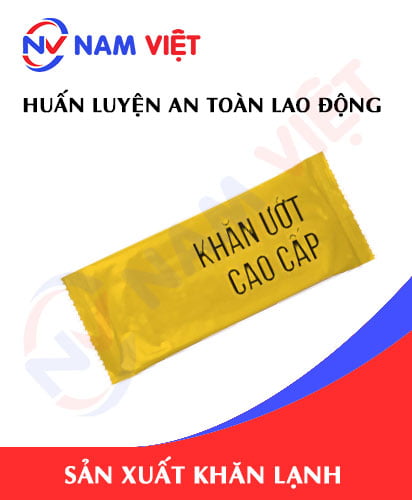




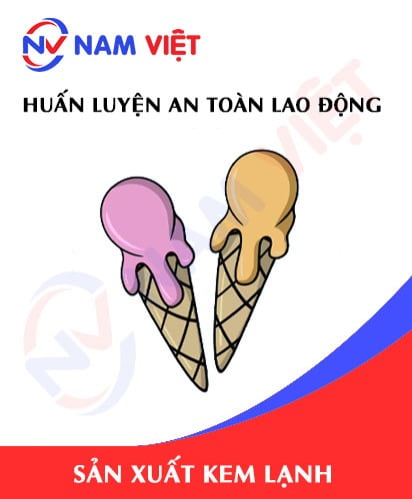
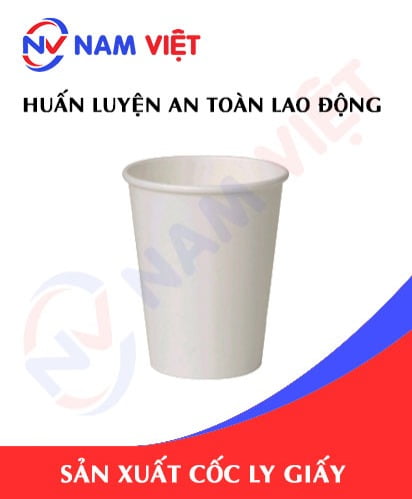
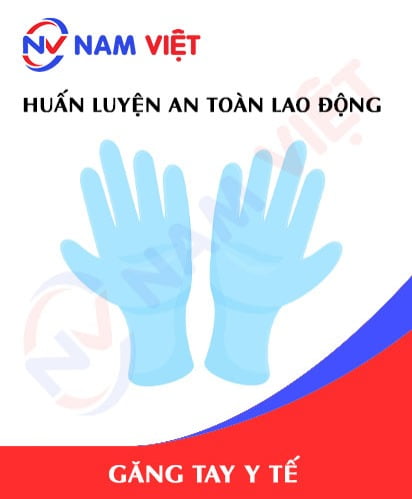
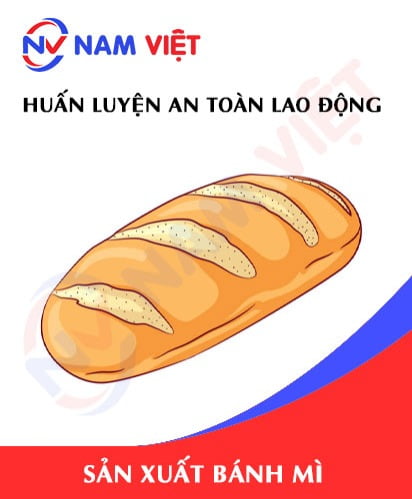

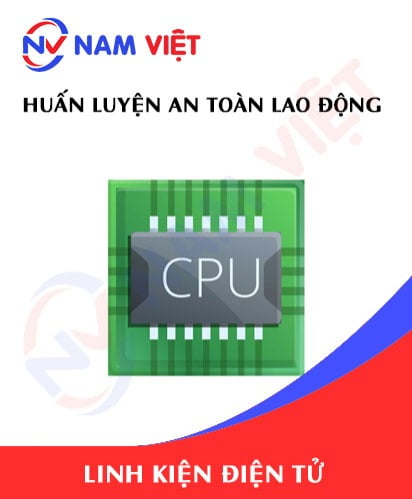
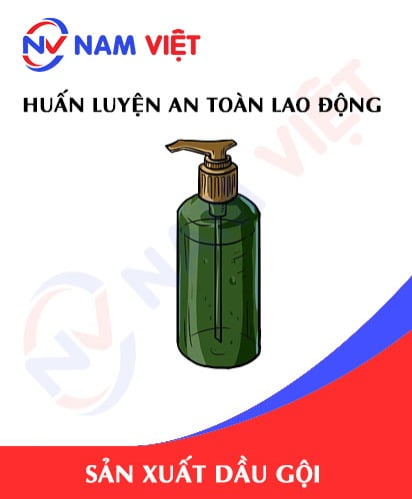
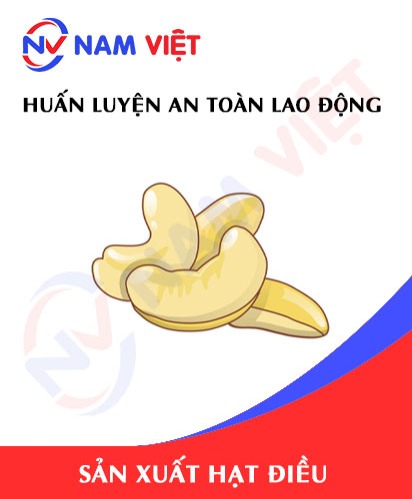
namchinh.haiphong341
Bài giảng rất sinh động!